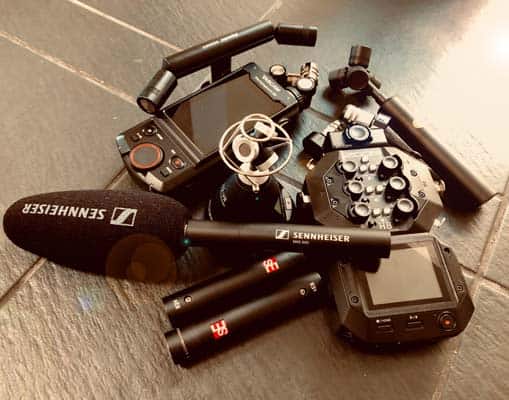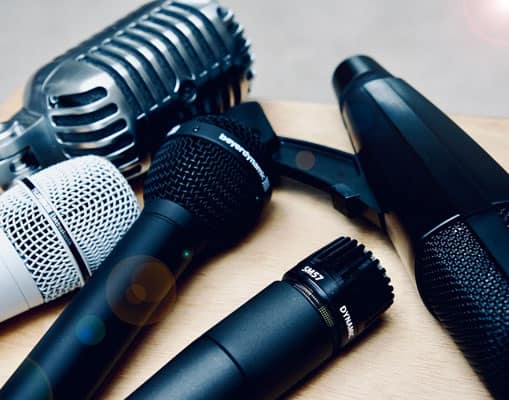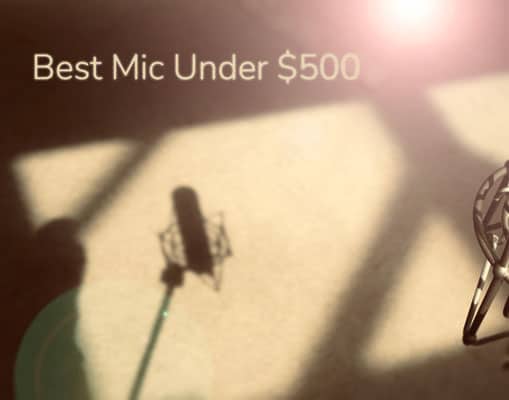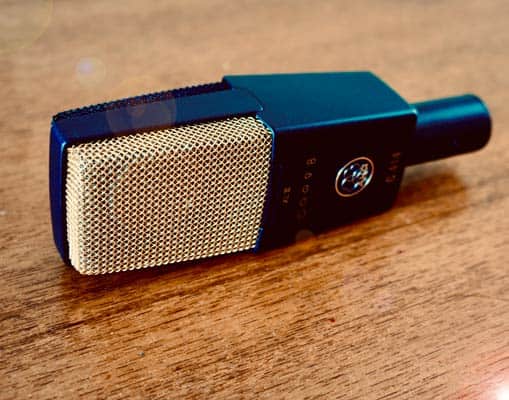What is Microphone Proximity Effect?
Microphone proximity effect occurs when lower frequencies are boosted as a mic is moved closer to its sound source. In our microphone reviews, we test and record the proximity effect of each microphone so that you can hear the results with your own ears.
Like most elements of recorded sound, sometimes we like it, sometimes we don’t. Let’s further explore what we’re dealing with.
See here for more posts about Microphones, or here for all things audio gear.
What Causes the Proximity Effect?
As we discussed in Types of Microphones & How They Work, a microphone does its job by measuring alterations in air pressure and translating them into an electrical signal.
The microphones most frequently used to record music and speech can be categorized into three main types of microphones: Dynamic, Condenser, and Ribbon. Each of these types uses some kind of diaphragm to measure alterations in air pressure.
In short, the proximity effect is a result of the disparities in phase and amplitude as the sound waves move a microphone’s diaphragm.
To understand the causes of the proximity effect in greater detail, we need to go under the hood a bit and discuss pressure and pressure-gradient mics. Then we can get into the two factors at play in proximity effect: namely, phase difference and amplitude.
Pressure Mics and Pressure-gradient Mics
There are two methods used by microphones to translate air pressure changes into electrical signals.
The first method, used by pressure microphones, measures air pressure by recording the movement of the diaphragm relative to its resting position. The second method, used by pressure-gradient microphones, measures the rate of change (or velocity) of the diaphragm’s movement in reaction to changes in air pressure.
For our purposes here, it’s important to remember that the diaphragm has two sides – a front and a back.
In a pressure microphone, only the front of the diaphragm is open to the air. The back is shielded from external sound pressure. Pressure mics are therefore, omnidirectional from birth.
In a pressure-gradient microphone, both the front and back are exposed. The diaphragm moves with the changes in pressure between its front and back.
Phase Differences
So, the first factor at play in microphone proximity effect is phase difference.
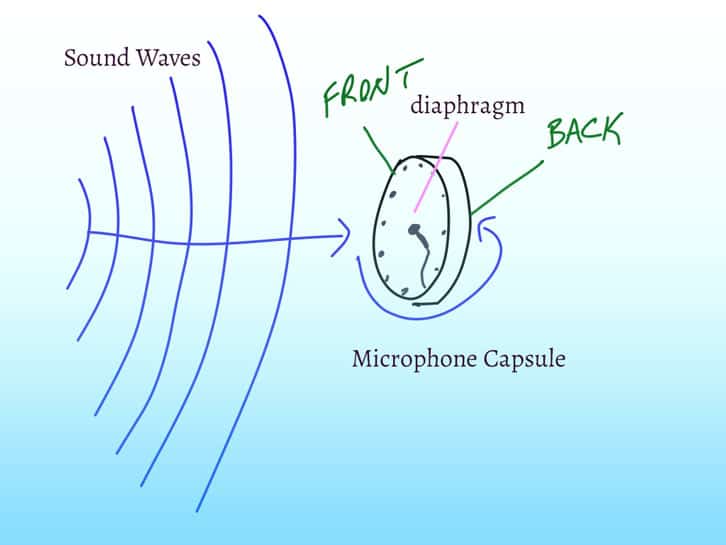
Naturally, it takes longer for the sound wave to reach the back of the diaphragm than the front. This delay creates what is called a phase difference, which produces an output in response to the pressure differences of the diaphragm.
These phase differences are negligible when recording a source from far away, but as you approach the source with the mic, phase differences increase. Because pressure-gradient microphones measure the differences (velocity, or the rate of change), this means moving the mic closer to its source will increase the signal produced.
Amplitude
The second factor at play with microphone proximity effect is amplitude.
For the low frequencies, the larger sound waves, the amplitude of the wave drops significantly as the distance increases. That is why pressure-gradient microphones have built-in compensation. Namely, the sensitivity of these mics increases by 6 dB (decibels) per octave.
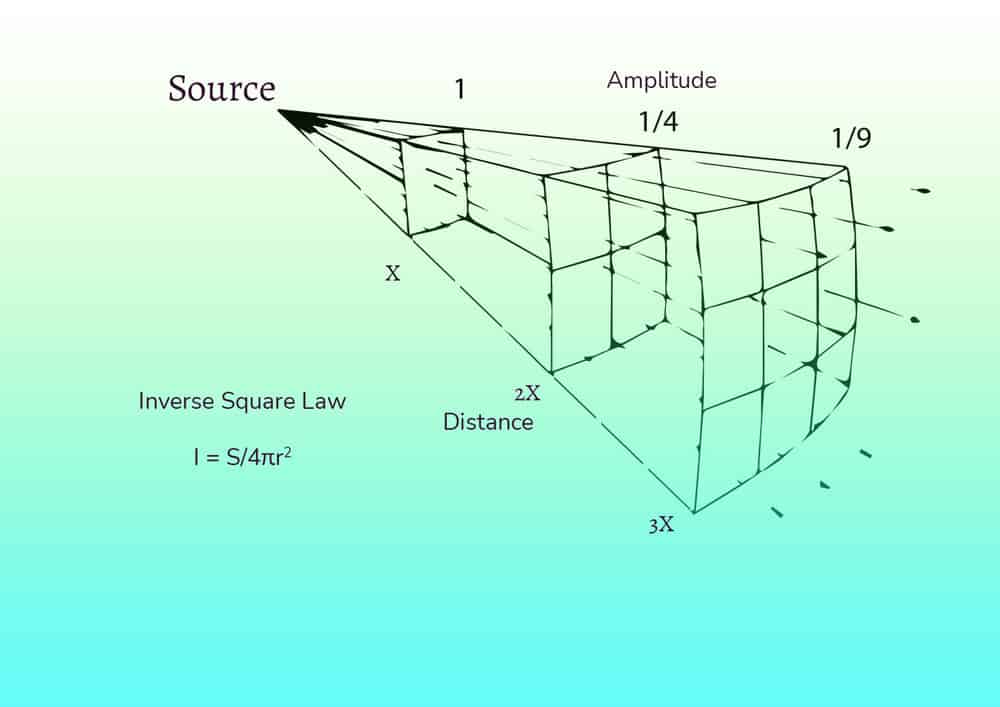
The Inverse Square Law in physics calculates that sound decreases by 6 dB for every doubling of the distance from the sound source. Hence, we have this precise compensation in pressure-gradient microphones.
This compensation means that the low-frequency sensitivity in pressure-gradient microphones is exaggerated. Consequently, what we call the proximity effect, exaggerations of the low frequencies as you move a mic closer to its source, becomes noticeable.
The Proximity Effect and Polar Patterns
As stated, pressure microphones are omnidirectional. Microphones with a bidirectional (Figure-8) polar pattern use only pressure-gradient components.
Microphones with polar patterns Cardioid (e.g, Neumann TLM 103) and its variants Super-Cardioid (e.g, Sennheiser E965) and Wide Cardioid (e.g, DPA 4015A) are achieved by combining pressure microphone components with pressure-gradient components.
In a cardioid microphone, the pressure and pressure-gradient components work together in equal proportions. The pressure component is immune to the proximity effect. By achieving this balance, the cardioid pattern effectively reduces the proximity effect by half compared to a bidirectional (figure-8) microphone.
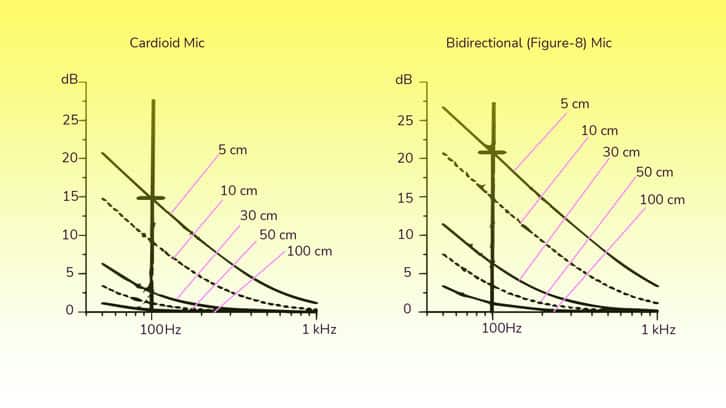
Practical Uses of the Proximity Effect
Due to the proximity effect, changing the distance of the mic from your sound source changes its frequency response. In this way, it can be used as a dynamic EQ giving you more low end as you are closer and less of it further away.
As a reminder, figure-8 polar pattern mics typically have the strongest proximity effect, followed by cardioid. Omnidirectional mics have no proximity effect.
Examples of Omnidirectional Mics include fixed-omni mics like the Shure VP64A or mics with switchable patterns including omni like the Neumann U87 (complete review of the U87)
Tips to Take Advantage of the Proximity Effect:
- Broadcasters, podcasters, and voice-over artists can make use of proximity effect to give the voice more bass, more baritone, more intimate, more Barry White.
- Kick drums, bass guitars, or any instrument thriving below 200 Hz can achieve a thicker, meatier sound with proximity effect.
- In a mix without bass guitar, kick drum, or other bass instruments, it can be nice to beef up acoustic or electric guitar by taking advantage of a mic’s proximity effect. In mixes with other bass-thriving instruments, this is not recommended.
Frequently Asked Questions
Is microphone proximity effect a good thing?
Sometimes, yes! As discussed above, it can thicken the low end of any voice or instrument. With a handheld mic, one can use proximity effect as responsive EQ by moving the mic closer and nearer to the source as needed.
When is proximity effect not good?
Distortion, plosives, clipping, and uneven takes due to different distances are all really annoying problems that sometimes result from not taking proximity effect into consideration.
Can I control the proximity effect?
Here are a few ways to control proximity effect:
Consider the Angles
Always consider the angle of the mic to the source. This will really help you to manage or take advantage of proximity effect.
The pressure-gradient elements of the mic (those responsible for the proximity effect) are in figure-8 polar pattern. This means that the side angles have a reduced boost on the low end.
As a result, speaking into the mic at an angle or giving a bit of an angle when miking a guitar amp will reduce proximity effect.
Use a High-pass Filter
A high-pass filter (a filter that cuts out the low end) can simply wipe out the low-end boost altogether for your take. Some mics and interfaces have high-pass filters on board. Or you can always just slap one on the channel strip in your DAW.
Use an Omnidirectional Mic
As discussed, these mics have no proximity effect. Keep in mind, they will pick up everything in the room, so you’ll need an acoustically treated space.
Also worth noting, the Electrovoice RE20 is an excellent dynamic, cardioid mic that has very little proximity effect. This mic uses Variable-D technology (D for distance), which reduces the effect.
Questions or Comments?
Follow the discussion here on Facebook.
